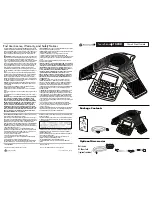
9 . M AC ( M e dia Acce ss Con t r ol) a ddr e ss
To allow a computer to determine which packets are meant for it, each computer attached
to an Ethernet network is assigned a 48-bit integer known as its MAC address (also called
an Ethernet address, hardware address or physical address). They are normally written as
eight hexadecimal numbers such as “00:71:88:af:12:3e:0f:01”. Ethernet hardware
manufacturers purchase blocks of MAC addresses and assign them in sequence as they
manufacture the Ethernet interface hardware. Thus, no two hardware interfaces have the
same MAC address.
1 0 . Pa ck e t
A packet is the unit of data sent across a physical network. It consists of a series of bits
containing data and control information, including the source and the destination node (host)
address, and is formatted for transmission from one node to another.
1 1 . Pin g
Ping sends an ICMP echo request message to a host, expecting an ICMP echo reply to be
returned. Normally, if a host cannot be pinged, you won’t be able to use Telnet or FTP to
connect to the host. Conversely, if Telnet or FTP cannot be used to connect to a host, Ping
is often the starting point to determine what the problem is.
1 2 . RARP ( Re v e r se Addr e ss Re solu t ion Pr ot ocol)
RARP provides a method of dynamically mapping 48-bit MAC address to the
corresponding 32-bit IP address.
1 3 . Sock e t
Each TCP segment contains the source and destination port number that can be used to
identify the sending and receiving application. These two values, along with the source and
destination IP address in the IP header, uniquely identify each connection.
The combination of an IP address and a port number is called a socket.
t GW - 7 0 0 Se r ie s Use r M a n u a l, V e r sion 1 .6 , Ju l. 2 0 1 1
54
ГК
Атлант
Инжиниринг
–
официальный
представитель
в
РФ
и
СНГ
+7(495)109-02-08 [email protected] www.bbrc.ru








































